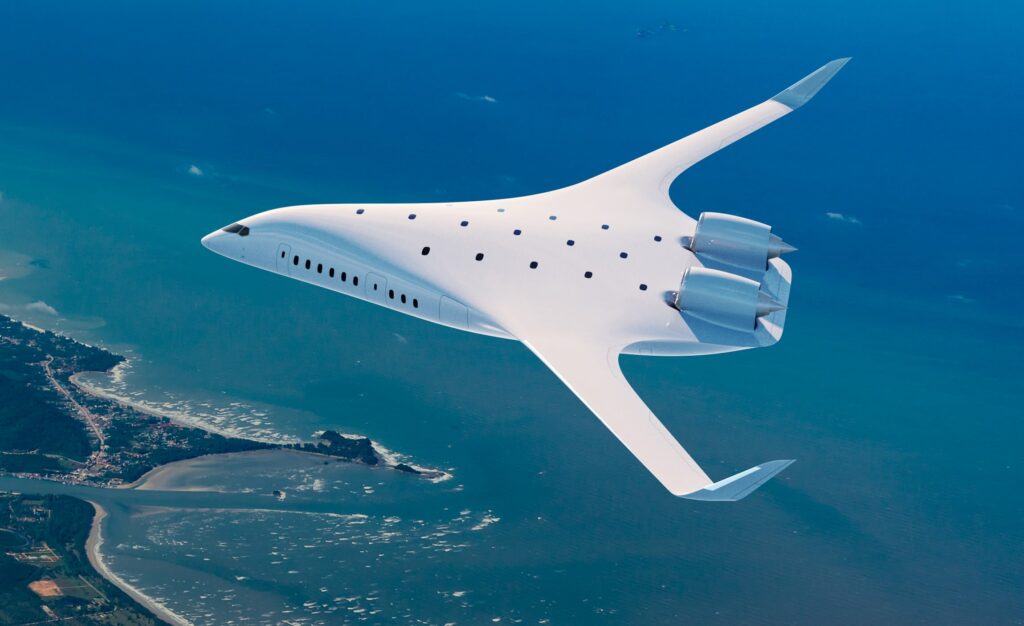The recently unveiled aircraft bears a striking resemblance to the B-2 bomber’s design, although the blended wing features increased volume in its central section.
Amid increasing pressure to reduce carbon emissions, the aviation industry is embracing the “blended wing design” for its next-generation aircraft. Major players like Airbus and Boeing support this innovative approach, anticipating a 50% reduction in fuel burn and carbon emissions. The design is gaining popularity among aviation enthusiasts, with California-based company JetZero aiming to capitalize on the trend.
“We feel very strongly about a path to zero emissions in big jets, and the blended wing airframe can deliver 50 per cent lower fuel burn and emissions. That is a staggering leap forward in comparison to what the industry is used to,” Tom O’Leary, co-founder and CEO of JetZero, told the outlet.
The new aircraft looks very similar to the design of the B-2 bomber, but the blended wing has more volume in the middle section.
Though not a recent concept, CNN reports that designers first conceived the notion of a blended wing in Germany in the late 1920s. The design later served as inspiration for the B-2, which was based on the work of American aircraft designer and industrialist Jack Northrop in 1947.
But over the years, the designers have perfected the blended wing design and JetZero said it has carried out more than 120 test flights between 2007 and 2012.
Also Read : Elevate Awareness on World Mountain Day
An Next-Gen Aircraft: Greater Wingspan
“An aircraft of this type would have a wingspan slightly greater than a Boeing 747 and could operate from existing airport terminals,” the company said. It added that the plane would also “weigh less, generate less noise and emissions, and cost less to operate than an equally advanced conventional transport aircraft”.
The design entails a wide, flattish fuselage that smoothly blends outward into a pair of wide wings, with no clear line separating the wing from the body.
American space agency NASA said the design helps reduce drag, thereby increasing fuel economy and creating larger payload (cargo or passenger) areas in the centre body portion of the aircraft.
JetZero said the first such futuristic jet will hit the skies by 2030. Designed as a replacement for the Boeing 767, it aims to accommodate a minimum of 250 passengers and provide a range exceeding 5,000 nautical miles.
Also Read : In space, two massive planets collide, Earth gathers cosmic dust.











More Stories
कमल हासन: 19 फिल्मफेयर, 4 नेशनल, पद्मश्री और पद्मभूषण अवॉर्ड भी नहीं रोक पाए विरोध की आंधी, अब क्यों जल रहे हैं इस सुपरस्टार के पुतले?
गोवा में टैक्सी संकट: चालकों का विरोध तेज, सरकार ने सरकारी ऐप से जुड़ने की अपील की
Prey Decline Fuels Tiger-Human Conflict in East India